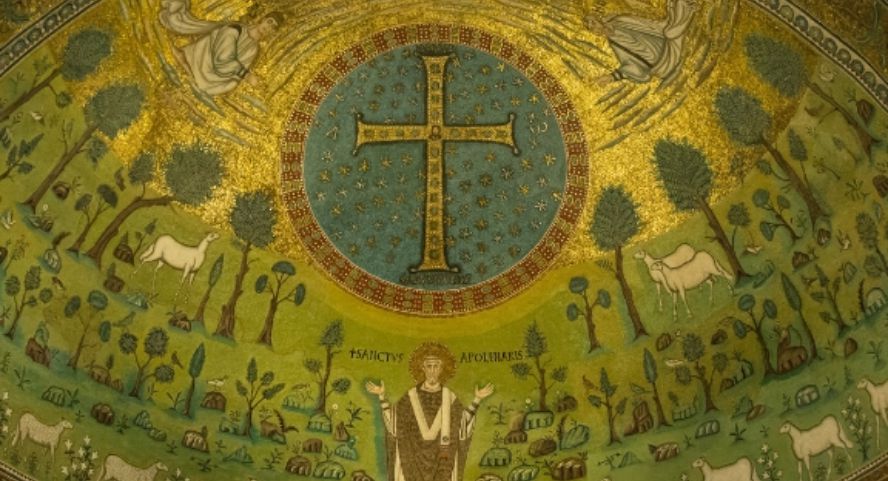The Catholic Church Regarding the Physically and Spiritually Sick in the Light of Selected Legal Texts of Eastern Christianity in 4th century
Abstract
The article describes the Church’s standpoint regarding physically and spiritually sick people. The article considerations are based on the analysis of Eastern Christian Legal texts from the 4th century, like: The Sacramentary of Serapion, The Canons of Hippolytus, The Canons of Athanasius, The Apostolic Constitutions, The Canons of the Greek Fathers written by bishops of that time and synods arrangements which were held in the East in the 4th century. The result of that analysis shows that Church ministry towards the sick people was a priority and was well organized. That was introduced in two ways: the material (almsgiving, hospital, and medicines providing), and spiritual (prayer of the local Church performed especially by a bishop and other clerics, visitations by bishop, widows, Church members, and catechumens). The sick received the sacraments on special terms (especially the penance, which in case of the sickness could be shortened). They were granted dispensations of compulsory prayers and fasts, which did not include almsgiving. Spiritually sick people, that is sinners, and heretics were covered with Church’s pastoral care. They were given spiritual remedies like chastening and admonition. In case they continued in sin or heresy, they were expelled so that they did not endanger the spiritual health of other Church members and for the Church’s sake.
Keywords:
the ancient Christian Church, care of sick people, sickness, sick people, sin, heresy, Ancient Church, care for the sick, sickness, sick people, sin, heresyReferences
Canones Athanasii (versio arabica), [wyd. arabsko-polskie], tłum. J. Szymańczyk: Kanony Atanazego (wersja arabska), w: Kanony Ojców Greckich, Atanazego i Hipolita, ŹMT 49 = SCL 3, Kraków 2009, s. 127-173.
Canones Hyppolyti (versio arabica), [wyd. arabsko-polskie], tłum. J. Szymańczyk: Kanony Hipolita (wersja arabska), w: Kanony Ojców Greckich, Atanazego i Hipolita, ŹMT 49 = SCL 3, Kraków 2009, s. 176-203; ed. R.-G. Coquin: Les Canons d’Hippolyte, Paris 1966.
Canones Patrum Graecorum, [wyd. grecko-polskie], tłum. S. Kalinkowski: Kanony Ojców Greckich, w: Kanony Ojców Greckich, Atanazego i Hipolita, ŹMT 49 = SCL 3, Kraków 2009, s. 1-124.
Constitutiones Apostolorum, [wyd. grecko-polskie], tłum. S. Kalinkowski: Konstytucje Apostolskie, układ i opracowanie A. Baron – H. Pietras, ŹMT 42 = SCL 2, Kraków 2007, s. 1-293.
Dokumenty soborów powszechnych (325-787), [wyd. grecko-łacińsko-polskie], tłum. zbiorowe, układ i opracowanie A. Baron – H. Pietras, ŹMT 24 = DSP 1, Kraków 2001.
Dokumenty synodów od 381 do 431 roku, [wyd. grecko-łacińsko-polskie], tłum. zbiorowe, układ i opracowanie A. Baron – H. Pietras, ŹMT 52 = SCL 4, Kraków 2010.
Dokumenty synodów od 50 do 381 roku, [wyd. grecko-łacińsko-polskie], tłum. zbiorowe, układ i opracowanie A. Baron – H. Pietras, ŹMT 37 = SCL 1, Kraków 2006.
Euchologion Serapionis, [wyd. grecko-polskie], tłum. A. Caba: Euchologion Serapiona, układ i opracowanie A. Baron – H. Pietras, ŹMT 42 = SCL 2, Kraków 2007, s. 300-318.
Baron A. – Pietras H., Wprowadzenie, w: Konstytucje Apostolskie, ŹMT 42 = SCL 2, Kraków 2007, s. XIII-XVIII.
Barrett-Lennard R.J.S., Christian Healing after the New Testament: Some Approaches to Illness and Healing in the Second, Third and Fourth Centuries, Lanham 1994.
Barrett-Lennard R.J.S., The Canons of Hippolytus and Christian Concern with Illness, Health, and Healing, JECS 13 (2005) fasc. 2, s. 137-138. (Crossref)
Botte B., L’Euchologe de Sérapion est-il authentique?, O 48 (1964) s. 50-56.
Brackman K., Alexandreia und die Kanones des Hippolyt, JbAC 22 (1979) s. 139-149.
Bradshaw P., An Ecumenical Ordination Prayer?, „Studia Liturgica” 26 (1996) s. 202-208. (Crossref)
Brzeziński M., Wiara w doświadczeniu choroby i cierpienia, „Studia nad Rodziną” 17 (32) (2013) fasc. s. 217-233.
Capelle B., L’anaphore de Sérapion, „Muséon” 59 (1946) s. 425-443.
Capelle B., L’anaphore de Sérapion: essai d’exégèse, „Questions Liturgiques” 80 (1999) s. 235-249. (Crossref)
Godlewska D. – Gebreselassie J., Religia a zdrowie i choroba, „Język. Religia. Tożsamość” 1 (17) (2018) s. 223-136.
Hamilton M., Incubation or the Cure of Diseases and Pagan Temples and Christian Churches, London 1906, 20122.
Harris C.H., Visitation of the Sick: Unction, Imposition of Hands and Exorcism, w: Liturgy and Worship: A Companion to the Prayer Books of the Anglican Communion, ed. W.K.L. Clarke – C.H. Harris, London 1932, s. 472-540.
Johnson M.E., A Fresh Look at the Prayers of Sarapion of Thmuis, StLit 22 (1992) s. 163-183. (Crossref)
Johnson M.E., The Prayers of Serapion of Thmuis. A Literary Liturgical and Theological Analysis, OCA 249, Roma 1995.
Maritano M., Serapione di Thmuis, w: Nuovo dizionario patristico e di antichitá cristiane, ed. A. Di Berardino, vol. 3, Genova – Milano 2008, k. 4856-4857.
Markschies Ch., Wer schrieb die sogenannte Traditio Apostolica? Neue Beobachtungen und Hypothesen zu einer kaum lösbaren Frage aus der altkirchlichen Literaturgeschichte, w: Tauffragen and Bekenntnis: Studien zur sogenannten ‘Traditio Apostolica’ zu den ‘Interrogationes de fide’ and zum ‘Romischen Glaubensbekenntnis’, hrsg. W. Kinzig – C. Markschies – M. Vinzent, Arbeiten zur Kirchengeschichte 74, Berlin 1999, s. 1-74.
Metzger M., Introduction, w: Les Constitution Apostoliques, éd. M. Metzger, t. 1, SCh 320, Paris 1985, s. 11-93.
Mokrzycki B., Różnicowanie się liturgii w „złotym okresie” twórczości eucharystycznej (IV-VII w.). Anafora z Euchologium Serapiona, CT 49 (1979) fasc. 4, s. 109-119.
Nautin P., Canoni d’Ippolito, w: Nuovo dizionario patristico e di antichitá cristiane, ed. A. Di Berardino, vol. 1, Genova – Milano 2006, k. 850-851.
Nautin P., Costituzioni Apostoliche, w: Nuovo dizionario patristico e di antichitá cristiane, ed. A. Di Berardino, vol. 1, Genova – Milano 2006, k. 1250-1251
Neunheuser B. – Navascués P. de, Unzione, w: Nuovo dizionario patristico e di antichitá cristiane, ed. A. Di Berardino, vol. 3, Genova – Milano 2008, k. 5512-5515.
Przybyłek M., Sanktuarium Asklepiosa w Epidauros, „Collectanea Philologica” 14 (2011) s. 105-118.
Renberg G.H., Where Dreams May Come, vol. I: Incubation sanctuaries in the Greco-Roman world, Religions in the Graeco-Roman World 184, Leiden 2017. (Crossref)
Rousselle R., Healing Cults in Antiquity: The Dream Cures of Asclepius of Epidaurus, „Journal of Psychohistory” 12 (1985) fasc. 3, s. 339-352.
Starowieyski M. – Szymusiak J.M., Nowy słownik wczesnochrześcijańskiego piśmiennictwa, Poznań 2018.
Szram M., Autokastracja Orygenesa – fakt czy nieporozumienie?, VoxP 23 (2003) t. 44-45, s. 171-202. (Crossref)
Szram M., Konstytucje Apostolskie, EK IX, k. 733-734.
Thomas J.C., The Devil, Disease, and Deliverance: Origins of Illness in New Testament Thought, Sheffield 1998.
Thurston B.B., The Widows: A Women’s Ministry in the Early Church, Philadelphia 1989.
Verheul A., La prière eucharistique dans l’Euchologe de Sérapion, „Questions Liturgiques” 80 (1999) s. 374-383. (Crossref)
Katolicki Uniwersytet Lubelski Jana Pawła II https://orcid.org/0000-0003-3011-3404
License
Papers published in Vox Patrum are covered by the Attribution-NoDerivatives 4.0 International (CC BY-ND 4.0) licence. Authors and users can use published works licensed under the CC-BY-ND since 2018. For earlier publications, copyrights are available under fair use rights in accordance with the Act of February 4, 1994 on copyrights and related rights.







